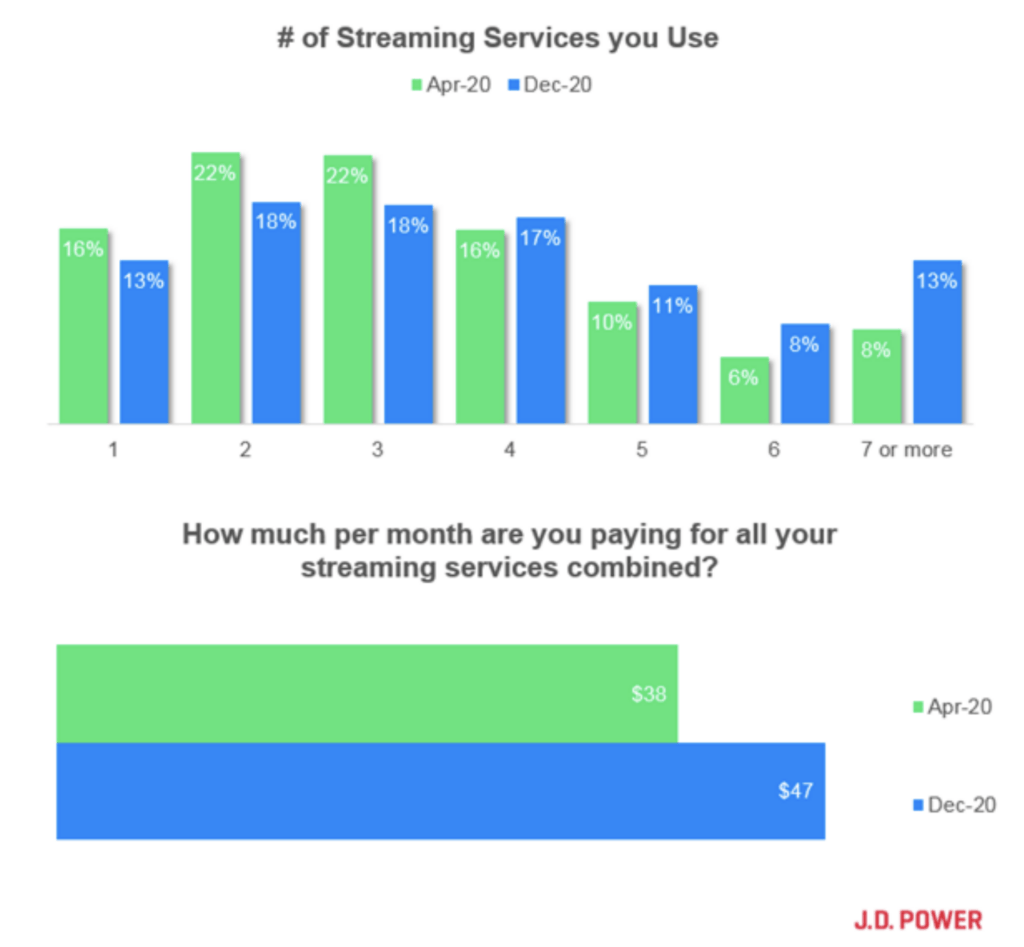How Much Do People Spend On Web Services
Ten
Advertiser Disclosure
Many of the streaming service offers that appear on cordcuttersnews.com are from companies which may also provide our site with compensation. This allows u.s.a. to back up our site and continue to provide y'all with the most upwards to date entertainment and streaming content. Our squad prides itself in providing objective news, reviews, opinions, and other related content to brainwash our readers so you tin make informed decisions. Please view our advertising policy page for more data.

Earlier nosotros reported the new average number of streaming services per household is now four, upwardly from three earlier in Apr 2020. At present, a new survey by J.D. Power shows that the average viewer pays $47/calendar month on all their subscriptions combined. Before this year, viewers were paying $38 on boilerplate for their subscription to three platforms.

At present compare that humble $47 to what viewers would be spending on a cable Tv set bill, and it's a far cry from the $51-100 average price users are shelling out for cable TV each month. According to Statista, about 34 percent of adults living in the U.S. indicated that they pay between 51 and 100 U.S. dollars for cable television each calendar month.
Average monthly spending on cable tv set in the United States as of July 2019

With the price of Cable TV seeming exorbitant compared to string cut, especially when you lot tin can subscribe to multiple streaming services for significantly less than a cable beak and withal get all your favorite programming and more than, broadband customers continue to drop like flies.
"Growing competition from subscription video-on-demand platforms such as Netflix has led to changes in the market, with cable Television subscription numbers falling and monthly costs increasing. But effectually half of the 2,200 people interviewed in the survey were able to provide an reply to this question at all, indicating that a pregnant portion of respondents was not currently paying for a cable TV service," writes research expert Julia Stoll.
So with four streaming services per household, which are the well-nigh pop ones people are subscribing to? According to J.D. Power's survey of ane,745 U.S. adults from Dec. sixteen-19, 2020, Netflix remains the undefeated superlative selection for video on demand. However, it lost a chip of its market share concluding year.

Netflix's marketplace share declined 4 pct points since April (85%), while five of its next six-closest competitors all picked up ground.
Amazon Prime Video ranked 2nd at 65% (down from 66% in April), followed by Hulu at 56% (up from 48%), Disney+ at 47% (up from 37%).
How Much Do People Spend On Web Services,
Source: https://www.cordcuttersnews.com/the-average-u-s-household-spends-47-month-on-streaming-service-subscriptions/
Posted by: brinkthapide.blogspot.com


0 Response to "How Much Do People Spend On Web Services"
Post a Comment